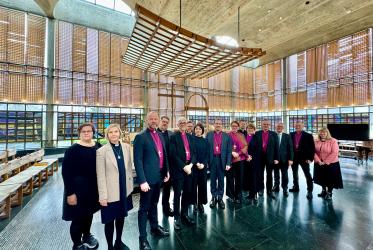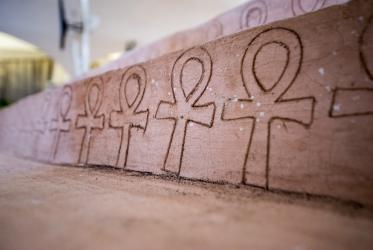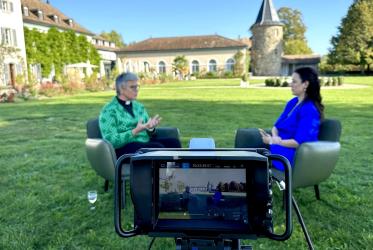By Odair Pedroso Mateus*
The 8th International Conference of Orthodox faculties, just held in Thessaloniki, Greece, is expected to contribute to the interpretation and reception of the 2016 “Holy and Great Council” of the Eastern Orthodox churches.
The 2016 Council was called “Holy” because the synods of the particular Orthodox churches are called “holy synods” and “Great” because it was not the synod of a particular church but the council of particular churches that understand themselves as the One, Holy, Catholic, and Apostolic Church.
It took the Eastern Orthodox Churches more than fifty years to prepare and hold the “Holy and Great Council”, which was envisioned as early as 1902. The Council finally took place at Pentecost 2016 in Crete, Greece. Ten out of fourteen “autocephalous” churches were present. The Churches of Russia, Bulgaria, Georgia, and Antioch did not participate.
For the Eastern Orthodox Church the “Holy and Great” Council was the synodical expression of the unity of the One, Holy, Catholic and Apostolic Church.
But a council becomes fully a council only if and when its teachings and decisions are received or appropriated by the local churches and the council is recognised as such by a following council. This requires first of all the analysis and interpretation of a council’s teachings and decisions.
The aim of the 8th International Conference of Orthodox theology was to contribute to the interpretation and reception of the 2016 Council. The conference was sponsored by His All Holiness the Ecumenical Patriarch Bartholomew and organised by the Faculty of Theology of the Aristotle University in Thessaloniki, Greece, May 21-25.
The Conference had more than 300 participants from 25 theological institutions and some 20 countries, including representatives of non-Orthodox communions and ecumenical organisations.
Six themes related to the life and witness of the Eastern Orthodox Churches today were on the agenda of the 2016 “Holy and Great” Council: the importance of fasting and its practice in our times; how an ecclesial region or “local Church” becomes autonomous from its self-governing Church; how the territorial understanding of “local Church” is applied to places in which, due to migration, members of different local Churches (for instance: Romanians, Bulgarians, Ukrainians, etc.) live side by side, creating the anomaly of overlapping church jurisdictions; the sacramental institution of marriage and the challenges it faces today; and the mission of the Orthodox Church in today’s world, including sections on human dignity, peace and justice, and the Church’s opposition to various forms of discrimination.
The participants in the theological conference contributed more than 120 papers on these themes presented in morning plenary sessions or in afternoon smaller panels held simultaneously. Speakers included Archbishop Anastasios of Albania, Archbishop Demetrios of America, and the WCC Vice-Moderator, Metropolitan Gennadios of Sassima.
One of the most controversial items on the agenda of the 2016 “Holy and Great Council” was the relations between the Eastern Orthodox Church and the other churches. The organisers of the theological conference invited ecumenical partners to offer their perspectives on the document “The Relations between the Orthodox Church and the Rest of the Christian World” adopted by the Council on the basis of two previous versions produced in 1986 and 2015.
The partners in dialogue of the Eastern Orthodox Church raised questions about the ecclesial quality of their relations, the role of laity in a council’s discernment, or the vision of Christian unity. Speaking from a Reformation perspective, one of the contributors urged the Orthodox to clarify the ecclesial status of the Reformation churches in the Orthodox view and what Orthodoxy understands by Christian unity.
In my contribution to the Conference I underlined a promising convergence between the referential position which the Reformed theologian Thomas F. Torrance assigned to the Eastern tradition in ecumenical dialogue involving separated Western churches, and the strategic position assigned to the Orthodox Churches in the governance of the World Council of Churches through the WCC Permanent Committee on Consensus and Collaboration.
Against this promising background for Orthodox contribution to the search for Christian unity, I welcomed the clear affirmation by the 2016 Council of the Orthodox engagement in the ecumenical movement and in particular in the programmatic work of the WCC on the basis of the so-called Toronto Statement adopted by the WCC Central Committee in 1950.
I noted, on the other hand, that while the language of the 1986 pre-conciliar document on ecumenism included an inspiring hope-related vocabulary, the language of the 2016 Council document on relations with “the rest of the Christian world” reflected the perception by the Orthodox of “a deep crisis in the ecumenical movement” related to growing disagreement in matters of moral discernment among churches involved in ecumenical dialogue and cooperation.
That perception, however, did not prevent the Council fathers from affirming, about the WCC Commission on Faith and Order that
The Orthodox Church wishes to support the work of the Commission on ‘Faith and Order’ and follows it theological contribution with particular interest to this day. It views favorably the Commission’s theological documents, which were developed with the significant participation of Orthodox theologians and represent a praiseworthy step in the Ecumenical Movement for the rapprochement of Christians.
The article is written by Rev. Dr Odair Pedroso Mateus, WCC Director Faith and Order
Orthodox conference interprets findings of the Holy and Great Council
Site of the 8th International Conference of Orthodox Theology
Site of the Holy and Great Council of the Orthodox Church






